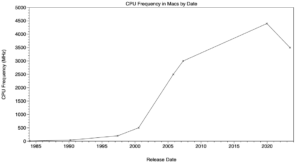A to Z of Landscapes: Panoramas

In this alphabetic tour of landscape painting, this week it’s the turn of P, for panoramas, most commonly seen as exaggeration of the ‘landscape’ orientation to widen an image’s field of view. It’s most conveniently expressed as the aspect ratio of width to height, where 2:1 means that the image is twice as wide as it is high, and that’s a reasonably practical cut-off for classifying a painting as a true panorama.
Although the term wasn’t invented until the late eighteenth century, some landscape painters started making panoramas well over a century earlier. Among them was Paul Bril (c 1553/4–1626), who trained and started his career in Antwerp, but spent much of it in Rome.
Paul Bril (c 1553/4–1626), View of Bracciano (c 1622), oil on canvas, 74.5 x 163.6 cm, Art Gallery of South Australia, Adelaide, South Australia. Wikimedia Commons.
Bril found a market for paintings such as this panoramic View of Bracciano from about 1622, with an aspect ratio of 2.2:1. Although strongly Italianate, it’s a painting ahead of its time: a fairly accurate depiction of a real place, with all sorts of fascinating little scenes within it, like the young boy doffing his hat to the passing dignitary in his coach with armed guard.
It’s generally accepted that the idea of a panorama was first formalised in a patent awarded to Robert Barker in 1787, and the word’s first appearance in print occurred four years later.
Caspar Wolf (1735–1783), Panorama of Grindelwald with the Wetterhorn, Mettenberg and Eiger (1774), oil on canvas, 82 x 226 cm, Kunsthaus Zürich, Zürich, Switzerland. Wikimedia Commons.
But the Swiss painter Caspar Wolf was among its earliest exponents, as shown in his Panorama of Grindelwald with the Wetterhorn, Mettenberg and Eiger painted in 1774 (not that the artist himself could have called it a panorama). This shows the distortion needed to include the whole of this view on a single canvas, with its remarkably high aspect ratio of 2.75:1. Today we’d envisage this as being painted through a wide-angle lens, although it was a century before such camera lenses came into use.
Giovanni Battista Lusieri (1755-1821), A View of the Bay of Naples, Looking Southwest from the Pizzofalcone Toward Capo di Posilippo (1791), Watercolor, gouache, graphite, and pen and ink on six sheets of paper, 101.8 x 271.9 cm, The J. Paul Getty Museum, CA. Wikimedia Commons.
A little later, Giovanni Battista Lusieri attained high aspect ratios of around 2.7:1 by assembling multiple supports, in his case sheets of paper, as he worked in watercolour on this View of the Bay of Naples, Looking Southwest from the Pizzofalcone Toward Capo di Posilippo in 1791.
Robert Barker’s panorama wasn’t artistic in the slightest, but pure spectacle and entertainment. His original depicting Edinburgh was painted on a large roll of paper, and first exhibited in Leicester Square, London, an area now known for its leading movie theatres. Baker either stuck the painted roll on the inside of a large cylinder for rotation about the viewer (also known as a cyclorama), or later he scrolled the roll past the viewers’ eyes.
JMW Turner (1775-1851), Petworth Park: Tillington Church in the Distance (c 1828), oil on canvas, 60 x 145.7 cm, The Tate Gallery, London. Wikimedia Commons.
Many paintings in JMW Turner’s huge output are panoramic in nature if not in form. This example, Petworth Park: Tillington Church in the Distance (c 1828), is viewed from a higher level even though its content has little vertical extent, to emphasise its long cast shadows. It has a high aspect ratio of 2.4:1, and the odd arc of the path in the foreground enhances its wide-angle effect.
Théodore Rousseau (1812-67), Vue panoramique sur l’Île-de-France (Panoramic View of the Ile-de-France) (c 1830), oil on canvas, 22.1 x 75.9 cm, The National Gallery of Art, Washington, DC. Courtesy National Gallery of Art, via Wikimedia Commons.
In about 1830, Théodore Rousseau’s Panoramic View of the Ile-de-France attained the highest aspect ratio yet, of just over 3.7:1, which may have been driven by the growing popularity of panoramas as entertainment. He’s also more conventional in placing the viewer at the level of the rooftops, looking over foreground buildings. The angles of lines of trees and other objects in the foreground appear to show wide-angle lens distortion, although the earliest known photograph wasn’t made until 1838. One possible explanation is that Rousseau used a camera obscura to draw in the view, although I’m not aware of any evidence that was the case.
Jean-Baptiste-Camille Corot (1796-1875), Avignon from the West (1836), oil on canvas, 34 x 73.2 cm, The National Gallery, London. WikiArt.
Just a few years later, Jean-Baptiste-Camille Corot painted panoramic views en plein air and in his studio. This example of Avignon from the West (1836) shows how well he transferred the skills that he had learned when in the Roman Campagna to the French countryside. Its aspect ratio is more modest at 2.2:1, similar to that of Paul Bril two centuries earlier.
Frederic Edwin Church (1826-1900), Niagara (1857), oil on canvas, 101.6 x 229.9 cm, National Gallery of Art, Washington, DC. Wikimedia Commons.
Many of Frederic Edwin Church’s epic landscapes were painted further south, well beyond the US border, but this early panoramic view made in 1857 remains one of his most important works, with its aspect ratio of 2.3:1. It’s now best read in its historical context, as a result of a time when secession of Southern states from the Union seemed imminent. Coupled with the significance of the Falls, and the unity of Church’s details, this painting became associated with the struggle to maintain that union.
Although Gustave Caillebotte painted several wide-angle views, like the mainstream French Impressionists, panoramas weren’t on the Impressionist agenda.
Alfred Sisley (1839–1899), The Terrace at Saint-Germain, Spring (1875), oil on canvas, 73.6 x 99.6 cm, Walters Art Museum, Baltimore, MD. Wikimedia Commons.
One notable exception is Alfred Sisley’s Terrace at Saint-Germain, Spring, painted soon after he had moved to Marly-le-Roi in 1875. It’s probably the grandest panoramic view in the Impressionist canon, caught at the perfect moment with blossom on so many of the trees, but with a low aspect ratio of only 1.4:1. By this stage the artist must have adopted Pissarro’s technique of painting in front of the same motif for several sessions, but this gives the impression of being instantaneous.
Henri Harpignies (1819–1916), View of the Seine at Rouen (date not known), watercolour over black chalk, on heavy watercolour paper, 24.7 x 54.5 cm, The Morgan Library & Museum, New York, NY. Wikimedia Commons.
I don’t have a date for Henri Harpignies’ magnificent watercolour panorama of View of the Seine at Rouen, which I believe shows the view from Bonsecours, to the south-east of the city, looking north-west into the summer sunset, with an aspect ratio of 2.2:1.
Few can compare with what must be the ultimately ‘big’ landscape, 120 metres (over 130 yards) long, with an area of just under 1700 square metres (0.4 acres).
Hendrik Willem Mesdag (1831-1915), Panorama Mesdag (1880-1), media not known, 1400 x 12000 cm, Panorama Mesdag, Den Haag. Wikimedia Commons.
The final word in painted landscape panoramas must go to Hendrik Willem Mesdag, in his staggering Panorama Mesdag (1880-1). Commissioned as a view of the village of Scheveningen, the Netherlands, from its coastal dunes, it’s 14 metres high and 120 metres long, giving it an aspect ratio of 6.8:1. When tastes changed towards the end of the nineteenth century, the company exhibiting the panorama as an entertainment went bankrupt; Mesdag bought it back, and it remains housed in its dedicated building, an appropriately extreme memorial to this long-lasting fascination.



